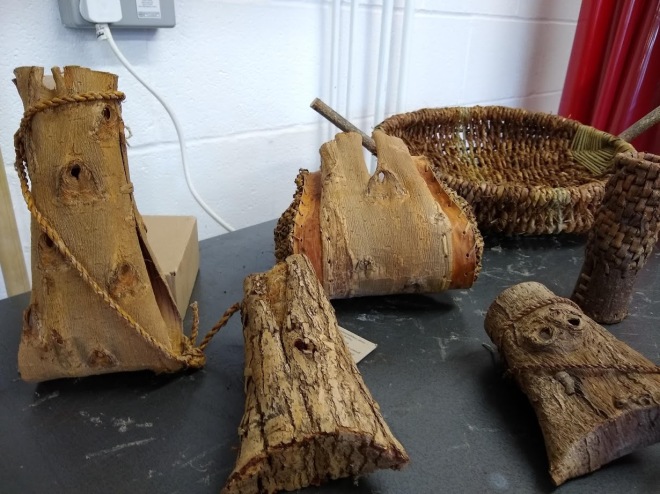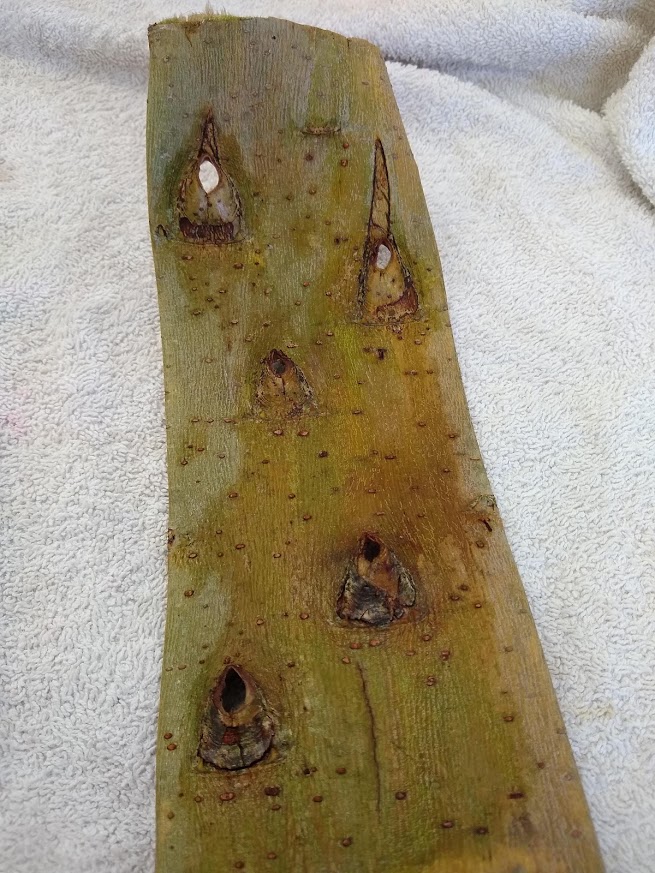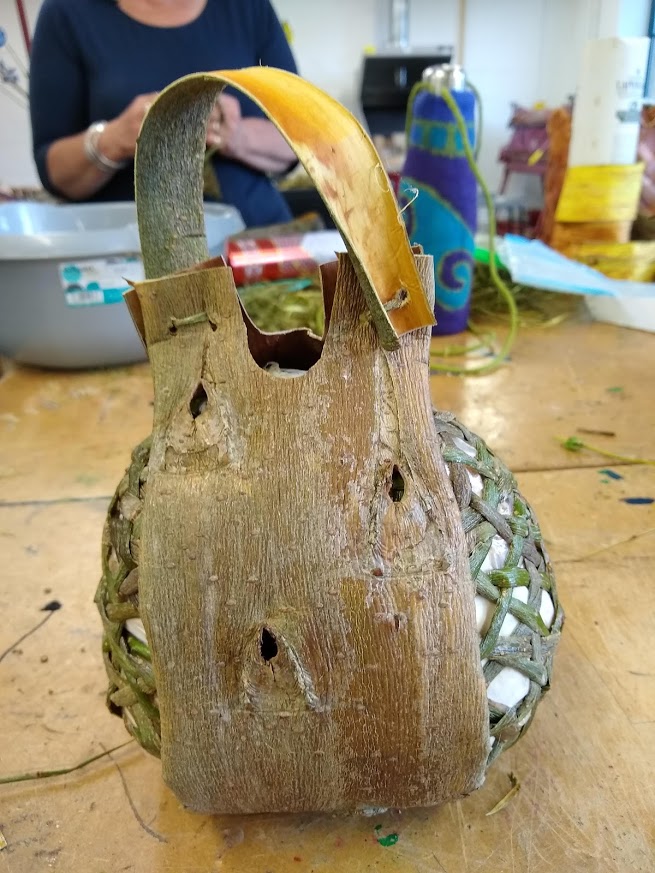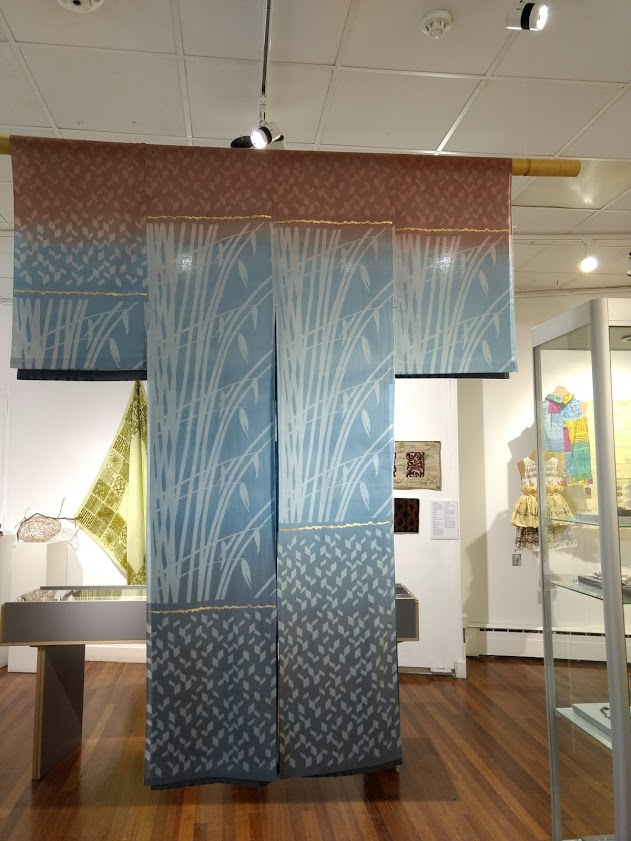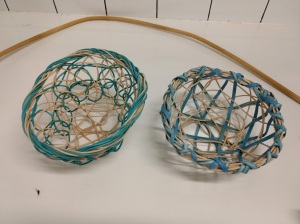So where did January go? Perhaps there’s a wormhole associated with Covi-19 that makes a month where every day seems to be the same suddenly pass in a flash. It’s too late to wish you all a happy new year, but Chinese new year is coming up on 12 February, so happy Year of the Ox to everyone!
Second shell vessel
Between Christmas and new year, I had an idea to try making another shell vessel to go with the tortoiseshell vessel. This one was inspired by a scallop shell.
I started by making some sample pieces of the shell segments.

Once I’d worked out the process and shape, I made seven segments of varying sizes.

Then I stitched them together and added a border.

The base was a bit trickier. Even with wire in the core I found it difficult to get the correct scallop shape. In the end I created a fan shape by leaving small gaps. So the vessel is not ideal for holding tiny items, but I think the effect is quite shell like. Some commenters on Instagram have also said it reminds them of an art deco shell clutch bag.

Here are the two vessels together.

I’m now thinking about a third vessel to complete the series, but it may take a while! 🙂
Bindweed vessels
I also carried on experimenting with bindweed, this time making some random weave vessels.

Someone on Instagram suggested that a large group would look good as an installation – so I made some more.

I’ve now run out of bindweed. I discovered that bindweed harvested after a heavy frost is rather brittle, so I guess I’ll have to wait until it regrows later this year!
Forces in Translation
My City Lit basketry course, which was due to resume this month after being halted last March, has again been postponed due to lockdown. 😦
However, an interdisciplinary group of basketmakers, anthropologists and mathematicians, called Forces in Translation, organised a couple of one-day public online sessions. These explored, among other things, cycloid weaving, looping in the Pacific, windmill knots, sand drawings and the topology of knots, through demonstrations, talks and practical activities.




Some of the maths was a bit challenging (Gauss topological notation for knots anyone?) and I wondered how I could apply it to basketmaking. But it was intellectually stimulating, especially once I grasped the principle, so maybe that’s the point. 🙂
Now I’m saving up my orange juice cartons to make a Tetrapak dog from windmill loops. This is an updated version of a cigarette packet dog, which apparently was popular in the 1950s.
So far I’ve got enough for three legs, so this could take a while!












